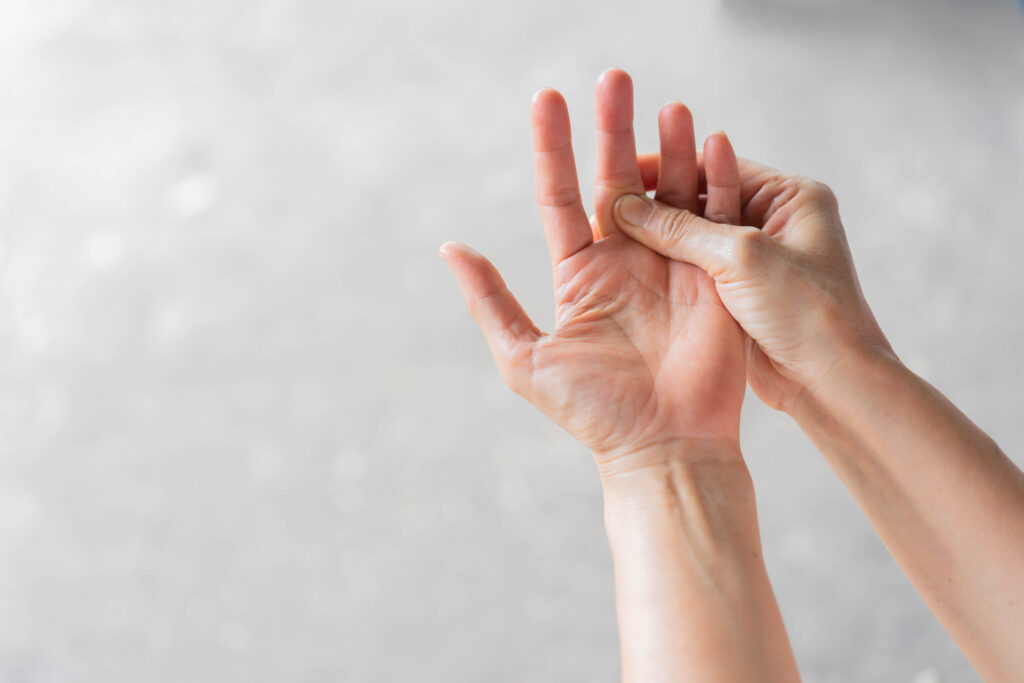
What is hand osteoarthritis?
Hand osteoarthritis is a common condition where the cartilage in the joints of the hand wears down, leading to pain, stiffness, and reduced movement. It most often affects the fingertips (DIP joints), middle finger joints (PIP joints), and the base of the thumb (CMC joint).
It is more common in women over 50 and may affect one or both hands.
Symptoms
- Pain and stiffness in the fingers or thumb
- Swelling or tenderness around joints
- Reduced grip strength or difficulty with fine movements
- Clicking or grinding sensations
- Bony lumps (Heberden’s or Bouchard’s nodes)
- Difficulty with tasks like opening jars, writing, or buttoning clothes
Causes and risk factors
- Age-related
- Repetitive hand use or manual work
- Previous hand injuries
- Family history of osteoarthritis
- Other joint conditions (e.g. rheumatoid arthritis)
Diagnosis
Hand osteoarthritis is diagnosed through:
- Medical history and symptom pattern
- Physical examination of the hands and fingers
- X-rays may be used to confirm joint changes or rule out other conditions if symptoms are severe and further intervention is being considered.
Self-care and management
1. Joint protection
- Avoid repetitive gripping or pinching
- Use larger-handled tools or adaptive devices
- Spread load across multiple joints when lifting
2. Pain relief
- Use paracetamol or ibuprofen as needed. Consider consulting your local pharmacist
- Topical anti-inflammatory gels may help
3. Hand exercises
Regular gentle exercises can:
- Improve flexibility and strength
- Reduce stiffness
- Maintain function
When to seek medical advice
- Pain is severe or worsening with significant swelling or joint deformity. Consider seeing your GP.
- You lose function or grip strength. Consider seeing your GP.
Further treatment options
- Hand therapy: for splinting, exercises, and education.
- Steroid injections: for short-term relief in inflamed joints, this can be helpful if there is a specific painful joint, but typically would not be considered for 3, 4, 5 etc. joints.
- Surgery: may be considered in severe cases (e.g. joint fusion or replacement)
Outlook
Hand osteoarthritis is a long-term condition, but many people manage it well with exercise, joint protection, and lifestyle changes. Symptoms may fluctuate, and flare-ups are common, but early intervention can help maintain hand function and independence.